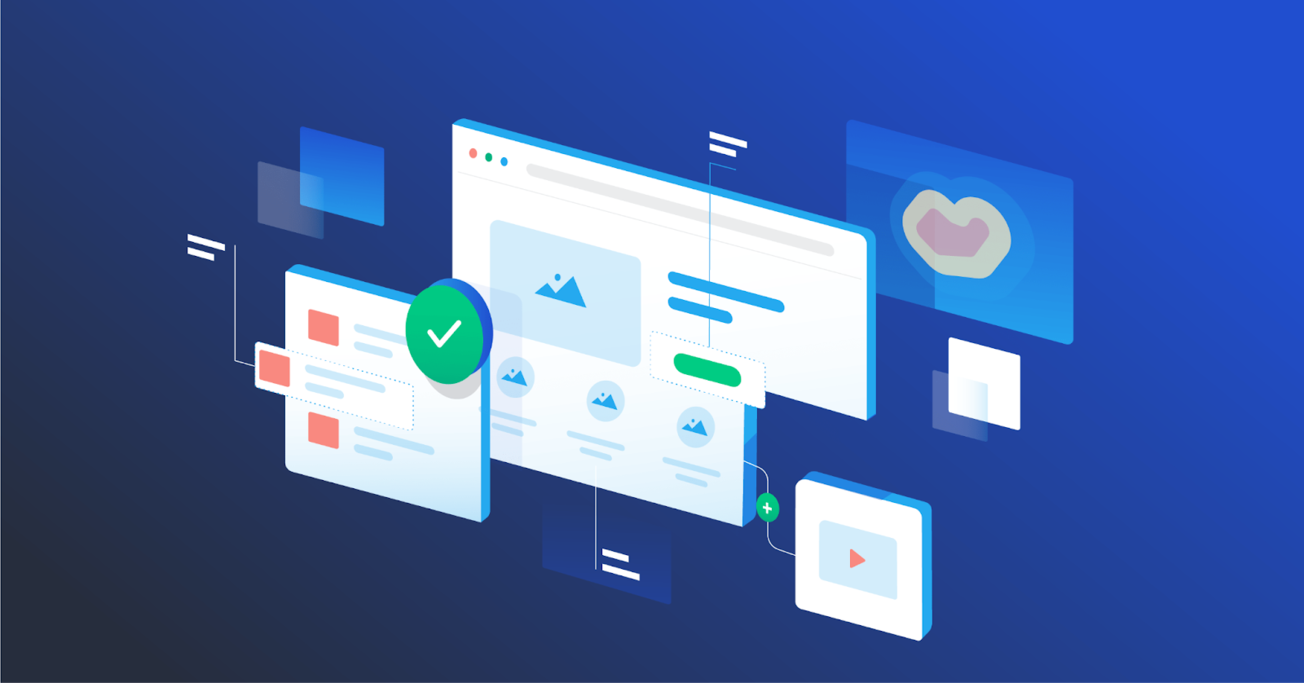Landing Page Best Practices for Boosting Conversions (With Infographic)
Follow these landing page best practices to generate leads, inspire action, and increase conversions.
Follow these landing page best practices to generate leads, inspire action, and increase conversions.
Micah is a digital designer who has worked with clients such as Google, Deloitte, and Autodesk. He is also the Lead Editor of Toptal’s Design Blog, and his design expertise has been featured in Fast Company, TNW, and other notable publications.
Expertise
Previous Role
Digital DesignerPREVIOUSLY AT



The term “landing page” can be misleading. It sounds passive, as if users are meant only to “land” and observe—like they would at an art gallery. Instead, landing pages have a specific and crucial purpose: facilitating conversion.
When designers lose focus on landing page conversion, it results in pages with too much information (the page thoroughly explains product features but fails to convince prospects to take action) or too little motivation (the page prioritizes aesthetic excellence but lacks clear value propositions).
Designers may be tempted to copy inspiring landing page examples to avoid these mistakes, but there’s a better strategy. By knowing which type of page achieves your goal and leveraging landing page best practices, you can clarify your brand’s value and drive conversions.
5 Key Types of Landing Pages
High-performing landing pages require great content, but in addition to crafting world-class copy and visuals, choosing the right landing page design is crucial. There are proven landing page formats that yield results and align with customers’ mental models, and determining the most suitable type for your project will ensure its success.
Lead Generation Pages
Lead generation pages collect contact information from prospective customers and help the sales or marketing team identify and follow up with those prospects who expressed interest in the product or service.
In exchange for customers’ information, offering a promotion, such as an ebook, podcast, or video series, is common. However, it is important to remember that gated content of this kind should be exclusive, easy to access, and aligned with users’ needs. Otherwise, customers might regret submitting their information and end up resenting your company.

Click-through Pages
Click-through pages tout product benefits with engaging images, copy, and videos meant to persuade prospects to click call-to-action (CTA) buttons that then lead to checkout or account-creation pages.
Click-through pages are a practical option for introducing consumers to a new product or highlighting features that make a product unique. For example, the landing page below includes an explainer video and a CTA button that links to a demo where users can try AI video technology before buying.

Pitch Pages
Pitch pages are streamlined versions of click-through pages. A key difference is that pitch pages feature minimal copy and imagery and immediately introduce value propositions. However, the objective of pitch and click-through pages is similar: to entice users to click a call-to-action button. CTAs on pitch pages often lead to a trial period or app download.

Squeeze Pages
Similar to lead generation pages, squeeze pages require prospects to submit their contact information before granting access to sought-after content. While lead generation pages often require users to fill out a form with multiple fields to capture data, squeeze pages commonly ask only for an email address or phone number.
“Squeezing” information can be a boon for generating email marketing leads, but it may irritate some users who don’t want to relinquish their contact details yet. Because of this, the reward for entering contact information should be appealing—like a discount or unique content. Or leverage the reciprocity principle and offer your users something like a summary of the gated content before requesting their information.
Sales Pages
Sales pages encourage immediate purchases. They’re advantageous when the landing page content is persuasive and prospects feel motivated to buy.
However, for consumers who aren’t yet ready to purchase, revealing information in layers and offering another way to get to know the product or service can help. For instance, the example below features two buttons: one to make a purchase and the other to test-drive the product.

Increase Conversions With Landing Page Best Practices
Regardless of which type of landing page format suits your needs, your primary design goal should be conversion. Some basic best practices include placing focus on the product’s value with persuasive visuals, concise copy, and simple navigation. You can eliminate any links, text, and visual design elements that divert attention from conversion.
That said, there’s no fail-safe formula for optimizing landing pages. Products are nuanced, as are the people who buy them. Compelling imagery and copy are essential but won’t meet their conversion potential if implemented poorly.
The downloadable infographic below outlines high-converting landing page elements that help designers illuminate value and show how products can fulfill customers’ needs and desires.

Download a PDF version of this infographic.
This article has recently undergone a comprehensive update to incorporate the latest and most accurate information. Comments below may predate these changes.
Further Reading on the Toptal Blog:
Understanding the basics
Why is a landing page important?
Organizations use landing pages to attract prospects and drive sales. They’re an effective way to focus attention on the unique value of goods and services. Designers can boost conversion rates by following landing page best practices such as user-friendly navigation and clear copy.
What makes a good landing page design?
Good landing pages have compelling value propositions, illustrative examples, and easy-to-use navigation with a clear call-to-action.
How do I optimize my landing page?
One of the most important measures that designers can take to optimize landing pages is eliminating text, imagery, and design components that divert attention from the page’s goal.
How do you build landing pages that convert?
Landing pages that convert often have a clear and compelling headline, concise and persuasive copy, a strong call-to-action, relevant imagery, minimal distractions, easy navigation, mobile responsiveness, trust indicators, and a simple checkout process.
Why do landing page best practices matter?
Landing page best practices are essential because they enhance user experience, generate leads, highlight a call-to-action, and convert prospects into customers.
Vancouver, WA, United States
Member since January 3, 2016
About the author
Micah is a digital designer who has worked with clients such as Google, Deloitte, and Autodesk. He is also the Lead Editor of Toptal’s Design Blog, and his design expertise has been featured in Fast Company, TNW, and other notable publications.
Expertise
Previous Role
Digital DesignerPREVIOUSLY AT





